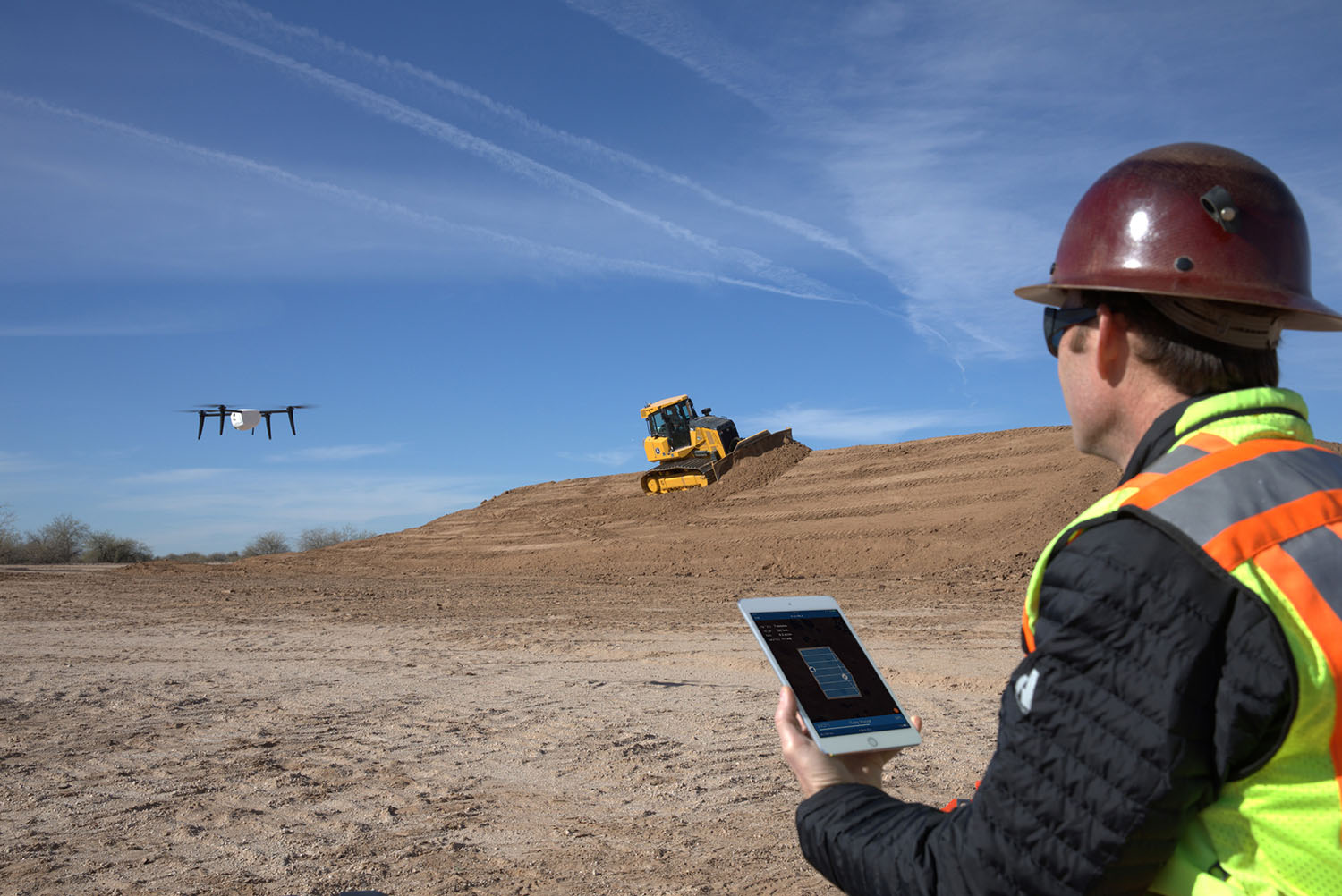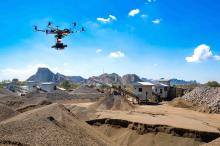
Wendling Quarries is using drone technology from Kespry throughout its aggregates operations for aerial intelligence to ensure inventory accuracy and reserves.
The drones are being used across Wendling Quarries' entire cycle from pre-production to post-production. It also uses Kespry for reclamation surveying when it closes quarries, so it understands what it has to do to meet bonding requirements and restore the quarry after mining.
"Instead of sending a survey crew out to understand how much reserve we have in the bottom stone ledge at a quarry, we'll use the drone," said Wendling Quarries owner and president Tony Manatt. "We use it on the planning side to know inventory of bank tonnes available. Our quarry development team can come to a meeting, pull up some survey work and know if we've got the ledge available to meet the salespeople's needs."
Wendling Quarries is a subsidiary of Manatts, and its operations include 13 counties throughout Eastern Iowa and Western Illinois. The family-owned business operates approximately 40 quarries, 11 sandpits, seven crushing plants, and eight wash plants in its service area. Wendling is focused on the production of crushed stone, sand, gravel, and asphalt mix, and processing of recycled concrete and asphalt.
Prior to using Kespry, Wendling used LIDAR technology with a gyrocopter, or rented planes to fly quarries to provide rough inventory estimates. But the company says accuracy was difficult, and it realised that incorrect estimates were making a big difference in year-end profits.
"We chose Kespry for the ease of use and to have our data in the cloud," said Manatt. "With frequent technology changes, I loved the fact that we'd lease and get technology updates along with the use of the drone for surveying. I liked the ability to upgrade through a lease. I liked the simplicity of flying it and downloading data the same day, and that it is iPad-based with no joystick. And especially that I didn't have only one guy who was the only guy to know how to fly it."
Paul Ross, vice president of marketing at Kespry, said: "Our goal is to give people like Tony a way to improve the profitability of their business with a drone solution that is dramatically more accurate, more cost-effective, and safer than what they used before."
Kespry's aerial intelligence platform is designed for industrial use to enable organisations to capture, analyse and share insights about their business. It delivers an integrated solution from drone data capture to industry-specific analytics.
Kespry serves customers across North America, Europe and Australia, including John Deere, Hancock Claims Consultants, Catastrophe Response Unit (CRU), Fluor, Lehigh Hanson/Heidelberg, and Colas USA.






